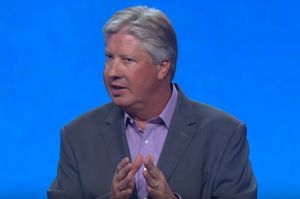How Christian managers applied biblical principles to win WWII and rebuild manufacturing

The lean business model embodies Biblical principles on many fronts if it is properly applied (see: No, efficient inventory management is not to blame for supply chain problems for an explanation of the lean business model and "Just in Time" manufacturing).
But how can that be? It is a Japanese practice, and more specifically, it is a Toyota practice. Well, actually it is not.
As is usually the case, one must dive into history, and scripture, to truly understand. Unfortunately most people do not.
While Toyota certainly deserves much credit for the development and application of the lean business model, it is not the original source of “lean” business practices. Toyota was one of the later examples of these practices, but an incredible incubator for them. The original source of the lean business model was the early Ford Motor Company, and more specifically Ford’s Highland Park plant, the home of the Model T. Even this was a convergence of many practices formed during the American Industrial Revolution, but Ford was where they came together as a complete system; Toyota would enhance it years later.
Henry Ford was a Christian man and worked to apply Christian values to his company. He was not a perfect man, nor perfect Christian. But nonetheless he did work to try to apply his Christian values to his business. In this article we will look at several of the Biblical principles which the lean business model exhibits and peer into some of the history behind them.
One of Henry Ford’s objectives was creating a car for the common man. Ford wanted to serve his fellow man en masse with modern transportation to free him up for progress, improved utility, and even leisure. Ford desired to create a useful product to service God’s other children of many different incomes, and ideally everyone. And he did in fact achieve this, mostly through his product, but also by dramatically changing the transportation market, which compelled others to make the same shift to service all citizens. Before Ford’s advancement of the car and its production techniques, auto transportation was solely a product for the wealthy. Ford permanently changed this.
Henry Ford also single-handedly changed income levels for hourly workers, again across the board, in time. When Ford instituted his now famous $5 per day wage, it was so dramatic that federal legislation was brought up in Congress to ban his newly introduced wage. Today we do not grasp how dramatic this increase was at the time Ford did it, but it was huge. Fortunately the legislation did not pass, but it was highly debated and many in Congress voted for the ban. Much of the opposition's attitude was: let that fool Henry Ford run himself out of business if that is what he wants, his $5 per day wage is unsustainable. Congress was wrong, and Henry Ford was right.
Ford desired to service fellow citizens on both sides of production, and he did. Toyota would pick up and develop this attitude in their business towards customers and employees, but Ford was there first, and set the standard.
Another fiction which Toyota gets credit for is their excellent use of standard work and kaizen (continuous improvement). The use of standard work and kaizen are foundational to Toyota and its Toyota Production System, and to The Toyota Way, its underlying business practices. While, again, Toyota achieved incredible development, application, and advancement of these practices, the practices themselves were developed elsewhere and were brought into Toyota. These practices were developed and deployed in the United States under the Training Within Industry (TWI) program during World War II and later deployed to Japan, and eventually into Toyota, during the occupation and rebuilding of Japanese industry.
The three programs developed during the war effort under the TWI program all had deep roots in America and Europe which coalesced during WWII. But what was the driver behind these programs, known as the J-Programs (Job Instruction, Job Methods, and Job Relations), even more fundamental than the need to support the war effort? Here is the message from one of the TWI leaders from a December 1945 newsletter to the TWI chiefs around the country:
As individuals we all believe this, but as groups we take the defensive. As individuals we give everything we have to those few nearest to us, but as the circle widens we become possessive and belligerent. As individuals we are courageous and stand for what we think is right, without hesitation. As members of a group we fight to preserve the group though it destroys the individuals who built it.
With Christ the dignity of the individual was born, but the struggle still goes on to recognize the individual within the group.
Once again, on Christmas Day we face this age-old problem with confidence that some day, notwithstanding centuries of struggle, groups of individuals will learn the importance of the dignity and true worth of every individual soul, for whom the very existence of any group is but to serve.
The TWI - Job Relations card says, “People must be treated as individuals.” This is both good Job Relations and the Christian way of life.
May all our Christmas gifts, given and received, remind us of the parts we play as individuals within the group that giving will be the rule some day among organized groups, industry, labor and nations, as it is and always has been among individuals.
C.R. Dooley,
Director, TWI Foundation (December 16, 1944, TWI Newsletter)
While the TWI leadership during the war were focused on creating an effective program to quickly, safely, and effectively boost the war production, their goals were underpinned by a more profound calling.
Servant leadership is also another significant practice in the lean business model. This, of course, is also a significant part of the Christian lifestyle: lead by example, lead with humility, lead with your subordinates' development in mind, always be a coach or mentor to those you are working with, and, finally, always be a learner yourself.
Author’s note: While there are many further examples illustrating the correlation between the lean business model and Biblical principles, this article discussed several from a historical and high level perspective. For more information on further examples refer to The Heart & Soul of Manufacturing: How Lean Management Aligns with the Better Angels of our Nature to Create Extraordinary Business Results by Bill Waddell.
Jim Huntzinger is the President and Founder of Lean Frontiers, Inc., which develops knowledge and learning communities on the Lean Enterprise for business and industry. With a background and experience in manufacturing and operations, he has also extensively researched the history and development of American manufacturing and also published several books on the lean business model, manufacturing history, and economics.





























